Kihyun Choo
Bunched LPCNet2: Efficient Neural Vocoders Covering Devices from Cloud to Edge
Mar 27, 2022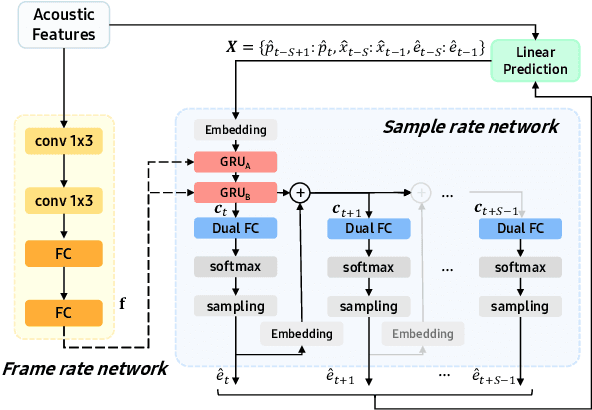

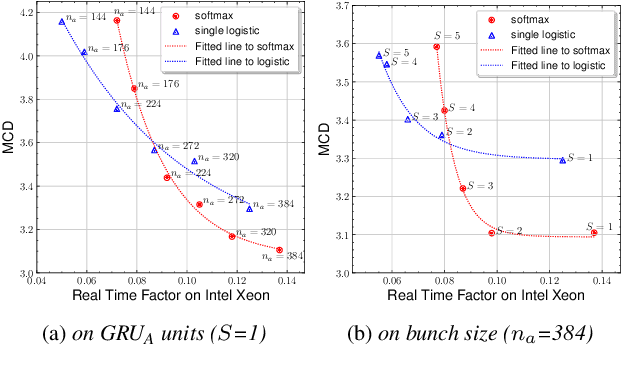
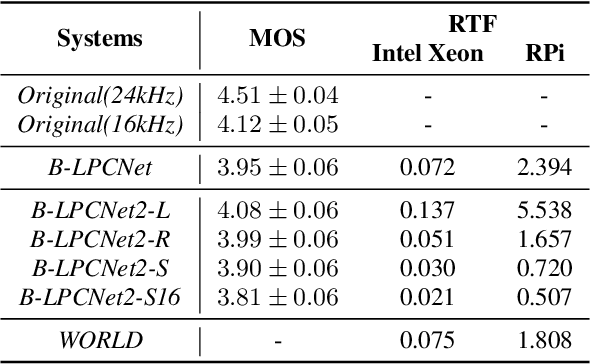
Abstract:Text-to-Speech (TTS) services that run on edge devices have many advantages compared to cloud TTS, e.g., latency and privacy issues. However, neural vocoders with a low complexity and small model footprint inevitably generate annoying sounds. This study proposes a Bunched LPCNet2, an improved LPCNet architecture that provides highly efficient performance in high-quality for cloud servers and in a low-complexity for low-resource edge devices. Single logistic distribution achieves computational efficiency, and insightful tricks reduce the model footprint while maintaining speech quality. A DualRate architecture, which generates a lower sampling rate from a prosody model, is also proposed to reduce maintenance costs. The experiments demonstrate that Bunched LPCNet2 generates satisfactory speech quality with a model footprint of 1.1MB while operating faster than real-time on a RPi 3B. Our audio samples are available at https://srtts.github.io/bunchedLPCNet2.
Bunched LPCNet : Vocoder for Low-cost Neural Text-To-Speech Systems
Aug 11, 2020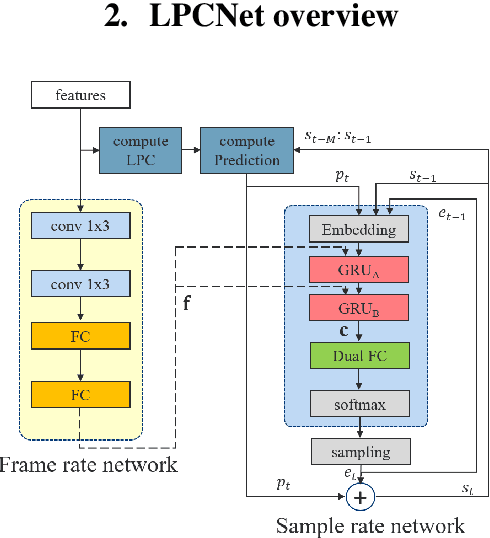
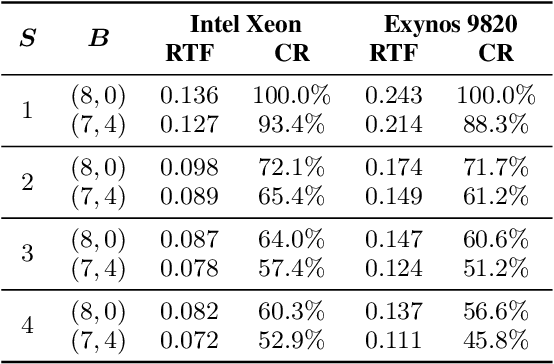
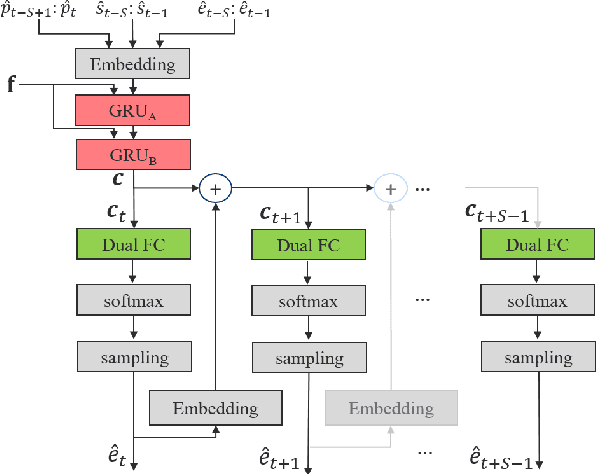
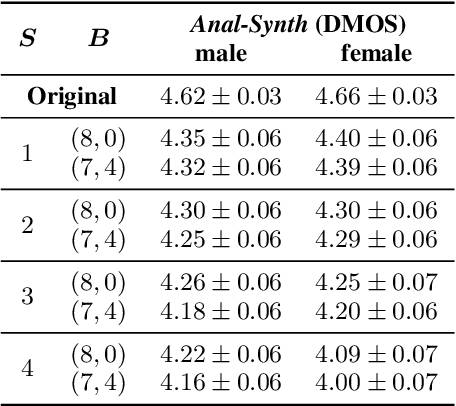
Abstract:LPCNet is an efficient vocoder that combines linear prediction and deep neural network modules to keep the computational complexity low. In this work, we present two techniques to further reduce it's complexity, aiming for a low-cost LPCNet vocoder-based neural Text-to-Speech (TTS) System. These techniques are: 1) Sample-bunching, which allows LPCNet to generate more than one audio sample per inference; and 2) Bit-bunching, which reduces the computations in the final layer of LPCNet. With the proposed bunching techniques, LPCNet, in conjunction with a Deep Convolutional TTS (DCTTS) acoustic model, shows a 2.19x improvement over the baseline run-time when running on a mobile device, with a less than 0.1 decrease in TTS mean opinion score (MOS).
 Add to Chrome
Add to Chrome Add to Firefox
Add to Firefox Add to Edge
Add to Edge